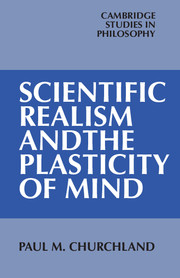3 - The plasticity of understanding
Published online by Cambridge University Press: 05 June 2012
Summary
The analytic/synthetic distinction
The growing recognition that the analytic/synthetic distinction is as unreflected in linguistic fact as it is recalcitrant in linguistic theory has made the discussion of meaning interesting again. The familiar picture of a sharply delineable conceptual framework distinct from and presupposed by the edifice of merely empirical belief, a framework whose girders are analytic truths and whose joints are concepts rigidly defined thereby – all this must be swept away, to be replaced by the holistic and dynamic picture of the evolving network of all of a man's beliefs, beliefs no longer differentiated by any exclusive semantic credentials or unique epistemological status. The older picture must be swept away not because there are no semantically important differences between one's beliefs – of course there are – but rather because its explication of what those differences consist in is confused, mistaken, and explanatorily sterile.
The plausibility of the analytic/synthetic distinction lies principally in the fact that for certain of the sentences we accept – for example, ‘All bachelors are unmarried males’ – we find it plausible to insist that they do not admit of a denial that is consistent with our current understanding of the terms they contain. And this has suggested to many that the meaning of the terms they contain is the source or ground of the truth of such sentences.
- Type
- Chapter
- Information
- Scientific Realism and the Plasticity of Mind , pp. 46 - 88Publisher: Cambridge University PressPrint publication year: 1979
- 1
- Cited by



